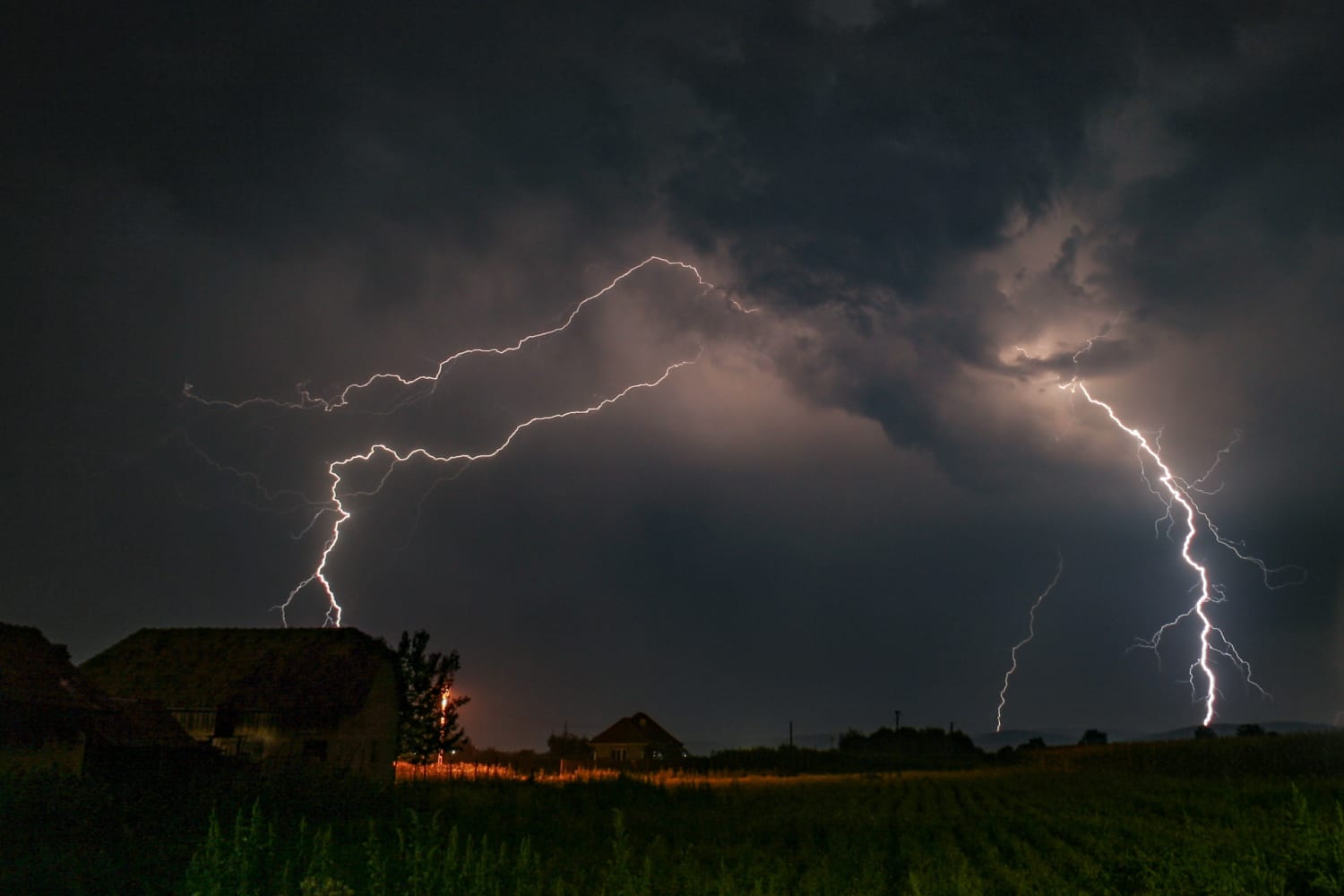Lightning Liability Insurance – How to Avoid the Shocks of Lightning Strikes
Lightning Liability Insurance Isn’t So Shocking with Homeowners Insurance
The sky darkens day into night, the wind picks up, and booming thunder rattles your windows. As every school kid knows, thunder follows lightning, and lightning strikes can kill. Indeed, every thunderstorm produces lightning, and all over the world, thousands of thunderstorms are happening at any given time, discharging millions of high-voltage lightning events.
Most people, including most golfers, know how to avoid the dangers of lightning when outdoors. In recent years, fatalities from lightning strikes have been steadily decreasing. Clearly, people are getting the message about the danger of lightning strikes. But what do you do if lightning strikes your house? How can you protect your biggest investment—your home? Does your homeowner’s policy include lightning liability insurance?
Lightning Liability Is Included in Standard Home Insurance
These questions matter in dollars and cents. Although lightning strikes are common events, the likelihood of lightning striking your home is nothing to lose sleep over. The chance of lightning striking you is about 1 in 600,000. Nevertheless, lightning can cause a lot of mayhem. The Insurance Information Institute estimates than lightning strikes cost the insurance industry almost $1 billion every year since 2011. The major hazard of a lightning strike on your house is the risk of fire. Lightning can also damage or destroy electronic devices like TVs and computers by causing a dangerous power surge. This power surge can fry the wiring in your home and even cause injuries to people inside. NOAA figures that about 5% of people struck by lightning were indoors using a corded phone at the time.
A recent storm in the Boston area offers up a prime example of the damage a lightning strike can cause. Lightning struck a golf course employee in Lexington, Massachusetts, sending him to the hospital. Lightning from the same storm stuck a nearby house, setting it on fire. No one was injured in the house, but the fire caused $150,000 in damage.
All standard homeowners insurance policies cover damage caused by lightning strikes. In fact, lightning is often the first type of disaster listed on a policy. Lightning liability is generally built in to your homeowner’s policy and includes coverage for damage caused by fire and damaged or destroyed wiring and electronic devices. If your home is struck by lightning, you may be displaced for several days. Your homeowner’s policy covers those expenses as well.
Besides the usual restrictions for flooding, earthquakes, and sewer back-ups, standard homeowners policies do not cover damage caused by faulty maintenance, which could limit the amount of damages that are covered by your policy in the event of a lightning strike.
How You Can Protect Your Home from Lightning Liability in the First Place
Many homeowners rely solely on their insurance to protect them from lightning liability. But you can also take some common sense precautions before thunderstorms appear in the forecast. Keep an emergency kit in your home that includes first aid supplies, flashlights, and extra batteries. Trees are often struck by lightning, so keep the trees near your home free of dead or rotting branches.
Although thunderstorms can occur anywhere, they are more frequent in the Midwest, South, and East Coast regions. If you live in an area that experiences frequent thunderstorms, installing storm shutters on your home will protect your windows and provide more security. Spring is the ideal season to prepare your home for thunderstorms that are more common in summer months.
Consider installing a lightning protection system. Traditional lightning rods and modern charge transfer systems are designed to safely disperse the electrical charge if lightning strikes your home. These systems come in a variety of styles and should be professionally installed.
Another good idea is to protect your home electronics and electrical system with surge protectors. Many people erroneously think all power strips have built-in surge protectors, but this is not the case. Most power strips provide little protection from a lightning strike. Read the labels carefully—UL-rated surge arrestors are your best bet. You can install these directly on your home service panel or circuit box. In general, the greater the joule rating, the better the protection.
But even the best surge protectors won’t guarantee the safety of your devices. When you hear thunder, play it safe and unplug the TV and computer, stay off the phone, and avoid windows and plumbing. Old-fashioned metal plumbing is an ideal electricity conductor that is vulnerable when lightning strikes.
Keep in mind that lightning is dangerous and many myths about lightning still cause injuries. For example, many people believe wearing rubber-soled shoes will protect them from lightning, but this is dangerously wrong. The same is true for seeking shelter in your car—the rubber tires won’t protect you from injury, although being in a car is far better than being outside in a thunderstorm.
Lightning can also strike long before or after the rainstorm comes and goes. Many people believe they are safe once the rain stops. But the conditions for lightning can linger for up to 30 minutes in your area after a storm has passed. To avoid unnecessary risk, treat every thunderstorm with respect, and make sure you have enough insurance to cover the worst-case scenario.

 EINSURANCE
EINSURANCE
 EINSURANCE
EINSURANCE EINSURANCE
EINSURANCE